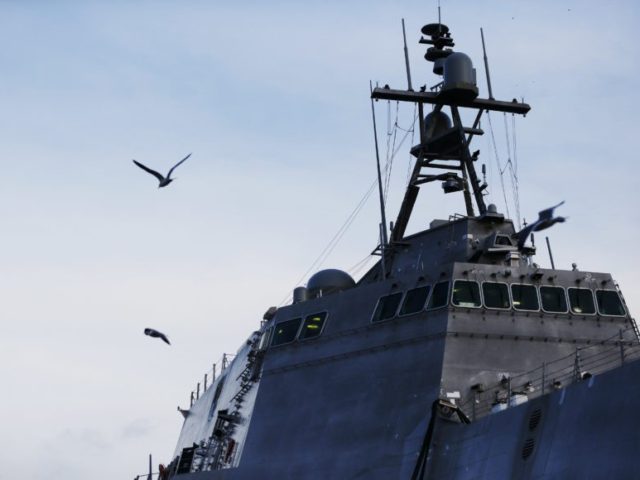WASHINGTON – Navy officials are looking into how to boost industrial capacity to build more ships as the service looks to increase its fleet from 274 ships to 355 over the next 30 years.
“There’s efforts ongoing right now to see what we can do to ramp up in the industrial base where we can and start moving quickly to that 355 number for platforms that we know we’re going to need,” said Rear Adm. Jesse Wilson, Jr., director of the Navy’s Assessment Division at a recent congressional hearing on what the future Navy should look like.
The Navy released plans in December to grow the fleet to 355, and President Trump has called for a 350-fleet Navy, but executing the plan requires overcoming the challenge to the shipbuilding industry’s capacity to handle the additional growth.
Bryan Clark, senior fellow at the Center for Strategic and Budgetary Assessments, said at the hearing held by House Armed Services subcommittee on seapower and projection forces, that there would have to be some investments in shipyards to enable them to further increase production, particularly in Connecticut.
“They’re largely going to be maxed out in terms of their near-term industrial capacity with the Columbia class [submarines] and if we try to do two attack submarines,” he said at the March 8 hearing.
“But they have workforce limitations that are going to keep them from growing further. There are some facilities constraints that just over time that have grown and need to be addressed. So putting some money into facilities and a training infrastructures of the shipyards are going to be able to bring on the workforce they need to grow in order to start doing the construction at the rate that we would need to get to a 350-ship or so Navy,” he added.
Trump has proposed a $603 billion defense budget for 2018, but it is not clear whether defense hawks or Democrats are on board. The defense hawks oppose the $19 billion increase from the Obama administration’s proposed amount, and $54 billion over budget caps set in place in 2013, arguing it is too small. Democrats oppose increasing defense spending over those caps without also increasing non-defense spending.
Rep. Donald McEachin (D-VA) questioned how much of the $54 billion would go into shipbuilding, versus restoring battle readiness of the current fleet, which has accumulated shortfalls in maintenance and repair exacerbated by the budget caps, referred to as sequestration.
“Does any part of that $54 billion put us on track to get to that 355 ship level? Because I got a whole bunch of folks who are looking for work in Virginia’s 4th Congressional District and they get mighty excited. But I’m hearing things that say ‘We need to slow down. We’re not going to get there too quickly with that number,'” he asked.
Wilson said the specific amounts are still unclear, but some of the money would go towards maintenance and restoring of the current fleet, while other sums would go towards building new ships.
Wilson’s deputy, Chuck Werchado, added that Defense Secretary Jim Mattis has indicated his priority would be on first restoring readiness, then growing the Navy. However, he said, restoring readiness would still involve shipyards.
“I would just point out that a lot of restoring readiness means Norfolk Naval Shipyard because we do have to do the repairs to those ships to get them back out. So, I would expect a lot of the investment would be going to increase the rate of overhauls and the capacity to do overhauls,” he said.
Sunoy Banerjee, portfolio manager of naval research development test and evaluation for Mitre Corporation, agreed.
“The ship maintenance industrial base would benefit from some of this money going into readiness because right now, all of our surface combatants, all of our amphibious ships get maintained at private shipyards. There’s a bunch in Norfolk. There’s a bunch along the East Coast. And so, there’s a lot of workers that are going to be brought into to help with that because that’s where a lot of our expansion volume is if you will in the ship maintenance industrial base,” he said.
The subcommittee’s Chairman Rep. Rob Wittman (R-VA) said more information on how the Navy plans to increase its fleet size would be coming soon.
“We’ve asked the Congressional Budget Office to outline for us the pathway to get to 355 ships,” he said.

COMMENTS
Please let us know if you're having issues with commenting.